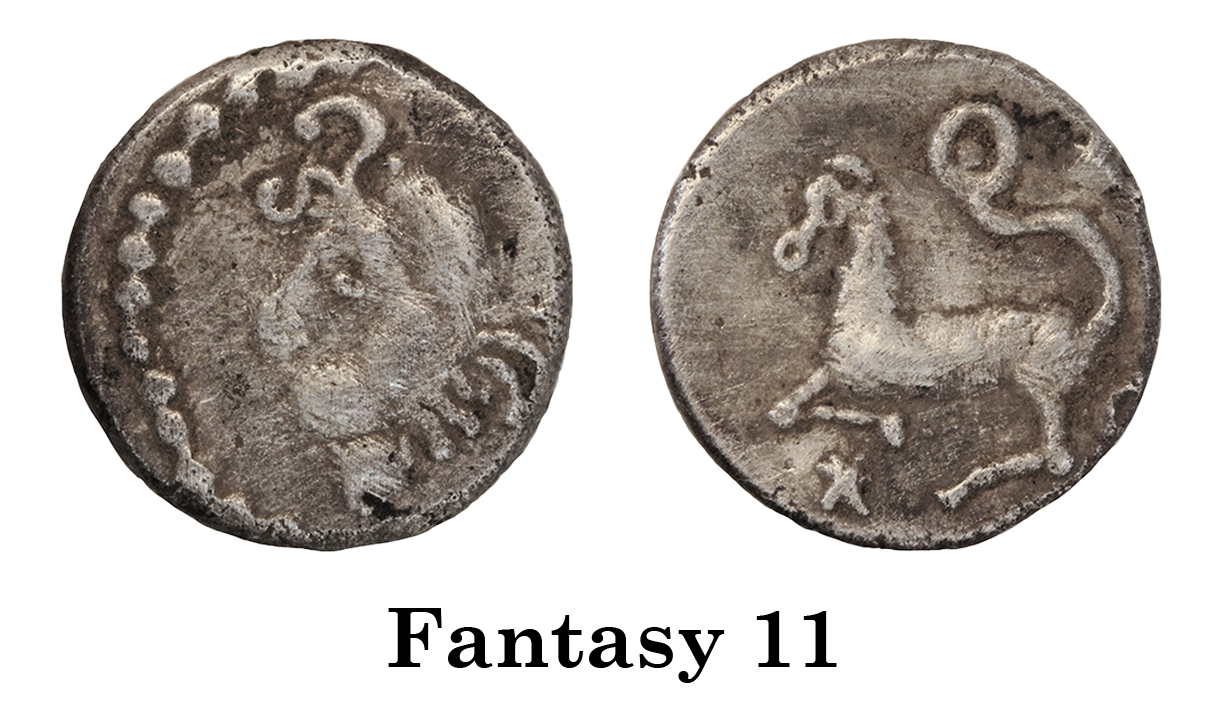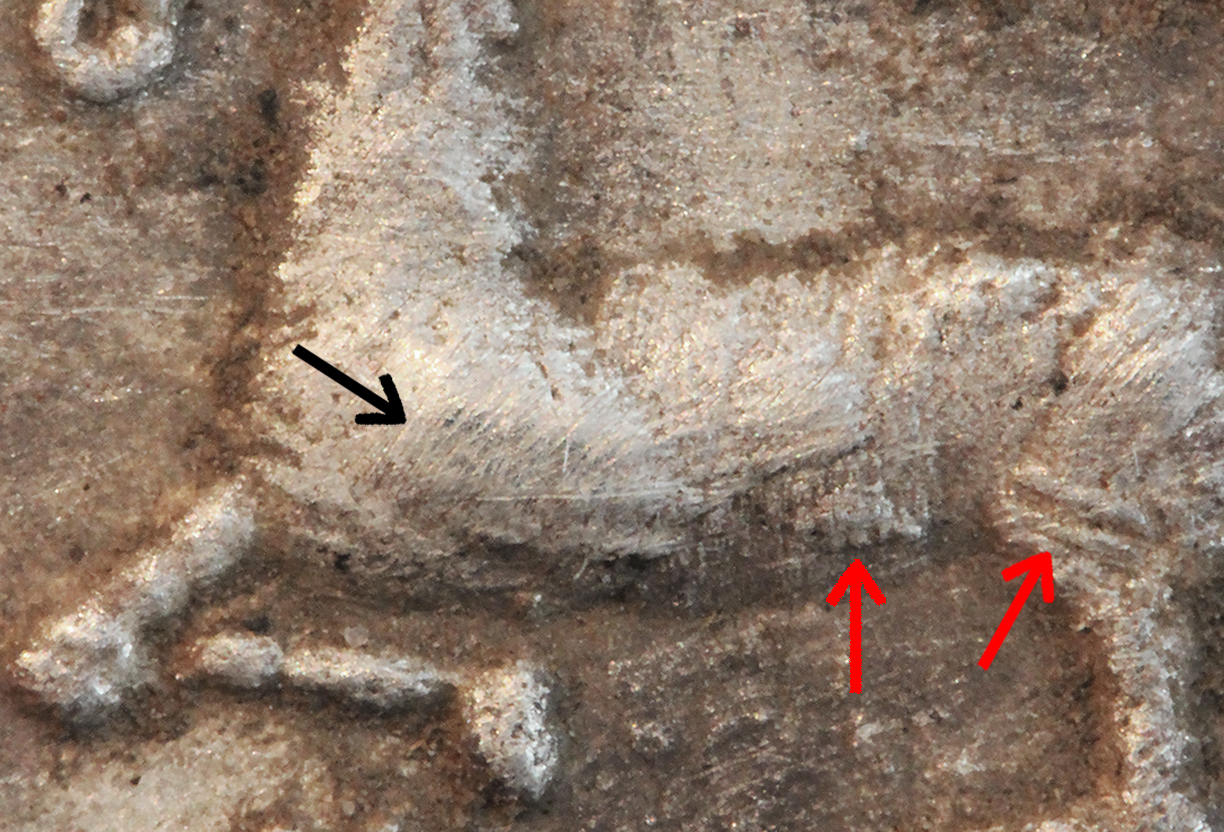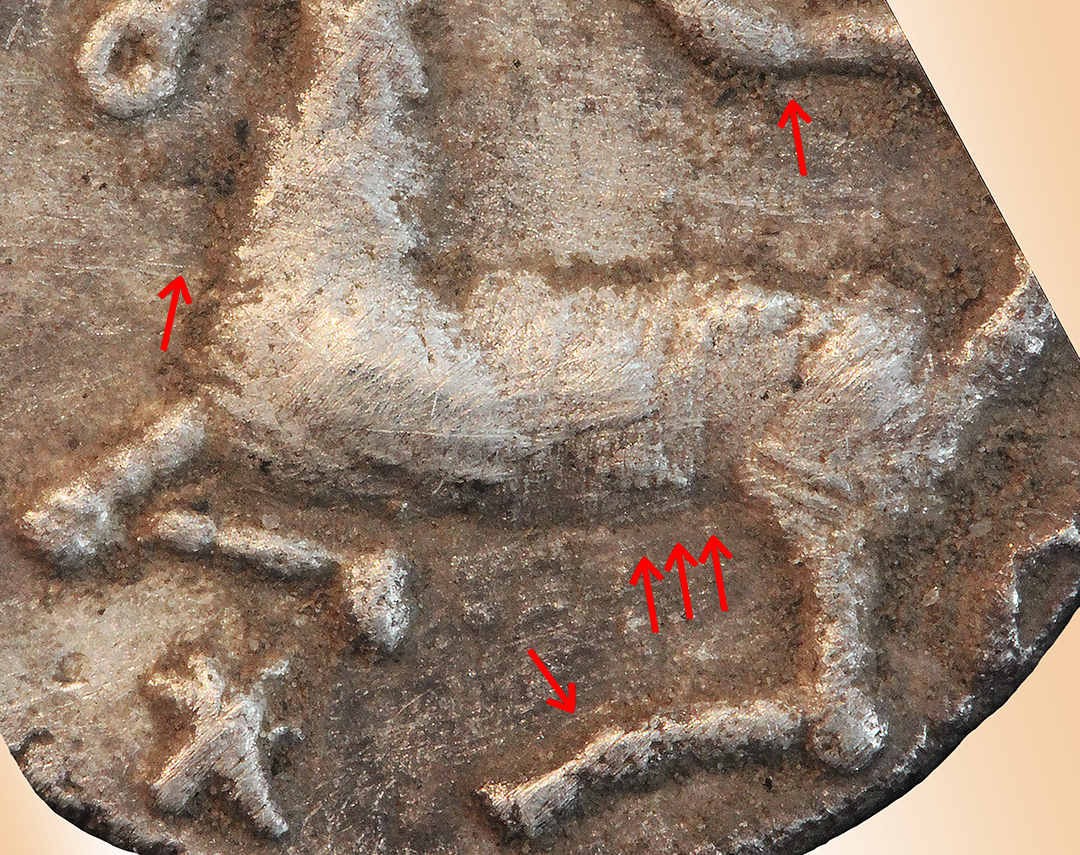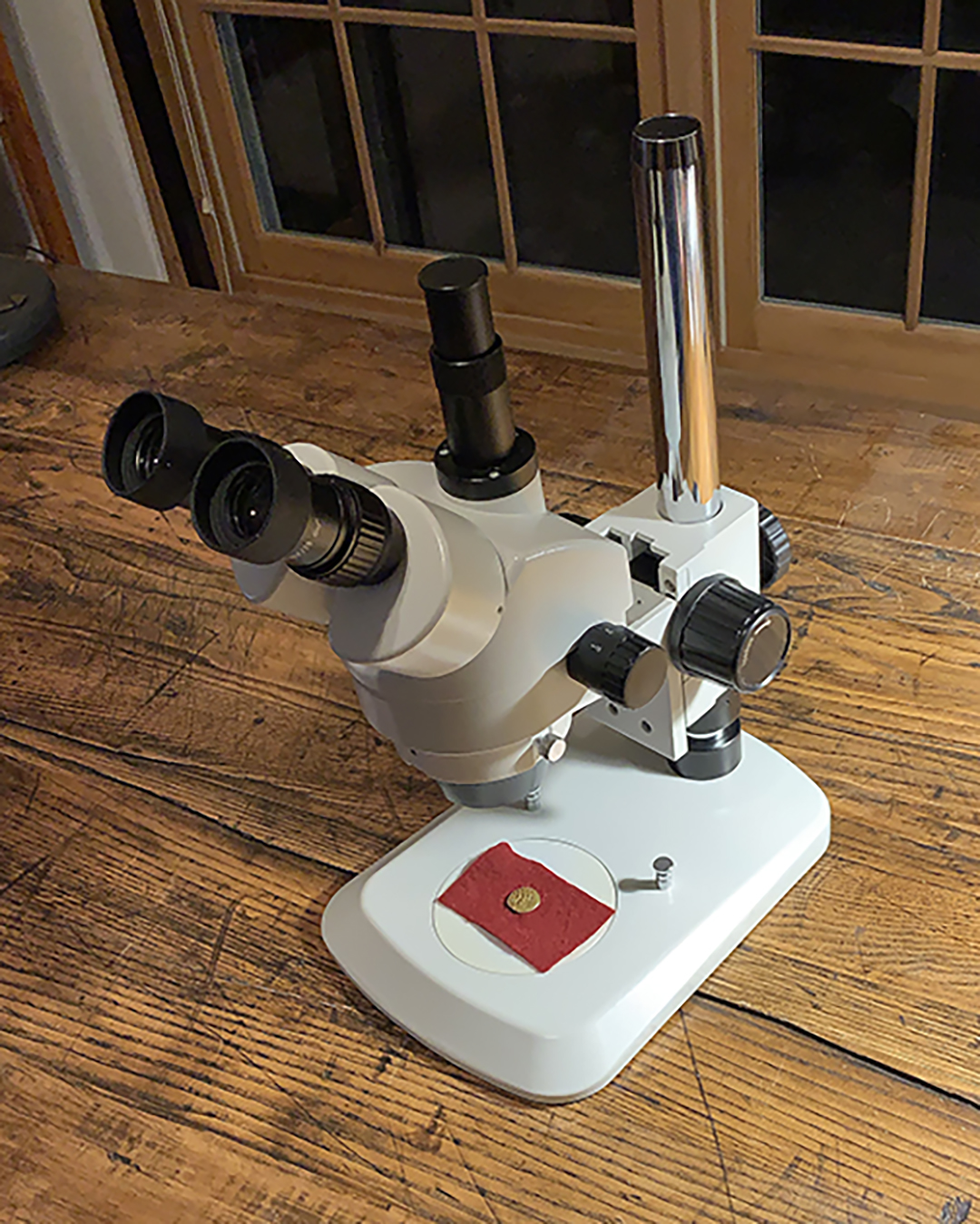
Numismatic Articles
Van Arsdell 2019c (Info)
A New Forger?
By Robert D. Van Arsdell
Generally, you can't judge the authenticity of coins by looking at photographs – you have to see the actual coins and use a stereo microscope. Every once in a while, however, a fake has errors you can see in low-magnification images. The coin above is one of these, and it's the work of a forger I haven't seen before. The coin's a small silver unit, has an 11mm diameter and appears to be die struck, not cast.
It's supposed to be a Gaulish silver coin...but is it? It doesn't seem to correspond to any published type.
I suggest the coin has a different origin. The balloon attached to the horse's tail would be unusual on Gaulish coins (or for that matter, authentic coins). However, it is the die-dressing and antiquing that give it away as a modern fake.
The coin is now designated as Fantasy 11 amongst the modern fakes on this website. Though I cannot trace it before 2019, there's always the chance it could have been hidden in a collection for some time.
The primary danger of forgeries is they contaminate the archaeological record. Had the fake been reported as a genuine type with a findspot, it could have entered the database of genuine coin finds. Fortunately it was not reported as a "new type" of British silver unit, nor given a phony findspot.
If it had entered the archaeological record, it could have led to the now-predictable mistakes some workers make over and over. It could have become evidence for a new British tribe. The long-haired "Doofus Head" on the obverse might have become a County Goddess. Fortunately, nothing of the sort happened. Instead, the numismatic community has the opportunity to suppress the work of this new forger.(Background)
The Diagnostics
The coin appears to be struck from dies and exhibits the usual die-dressing errors seen on the work of the Haslemere Forger.(Info) However, it doesn't appear to be a product of that workshop. The errors are much worse and the coin's been heavily brushed to erase them – not the usual practice of the Haslemere Workshop (where chemical agents are used, instead).

As always, viewing the coin with a stereo microscope at 50x, made it easy to identify the problems and their causes. The die cutter had tremendous trouble engraving the tiny dies and couldn't obtain the smooth relief seen on genuine Celtic coins. The sloppy work produced thick raised lines and blobs of metal on the finished piece (red arrows).
The forger then brushed the finished coin with something like a wire brush to obliterate the raised blobs. The entire coin is covered with fine scratches scored into the metal (black arrow).

In desperation, the forger tried to hide the previous errors by coating the fields with dirt and quartz pebbles. Hoping that buyers would think the coin had come out of the ground, the forger had made one fatal mistake. The dirt was painted over the shiny scratches created by the wire brush (red arrows). The brand-new scratches go under the dirt, an impossible thing for a coin supposedly two thousand years old.

The stereo microscope provides the three-dimensional viewing you need to see which lines are raised and which are sunk into the surface. You cannot make this determination using a loupe and viewing with one eye – no matter how high the magnification you use. The shadows are not pronounced enough to judge the relief when it is so shallow.
Summary
Crude fakes like this one are useful for anyone studying Celtic coins: dealers, collectors and academic workers. They're an easy means to learning authentication techniques, and as such can prevent the falsification of the archaeological record.
Everyone involved in Celtic coin studies needs to arm themselves with authentication knowledge. The day when one could use the excuse "so-and-so thinks it's all right" is long past.
End
